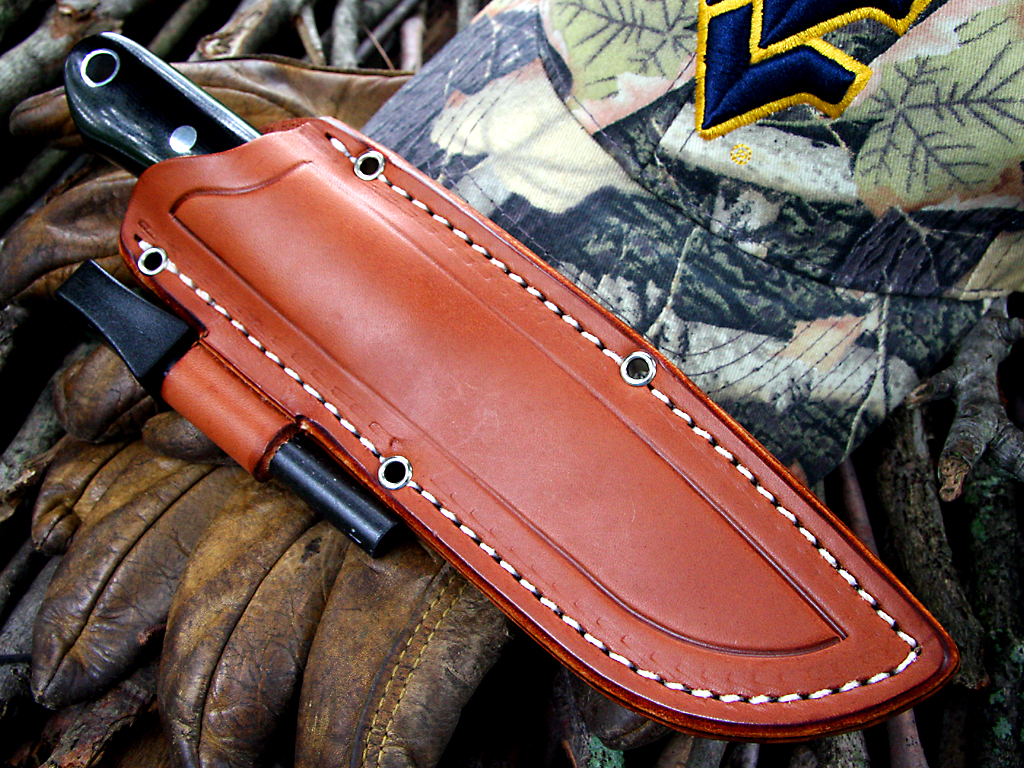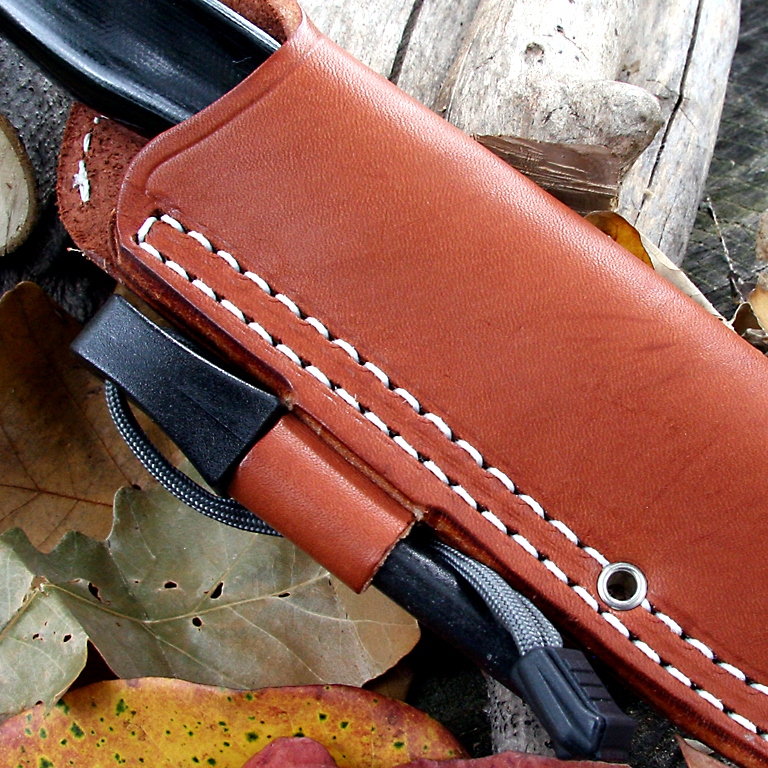How-To: Choosing & caring for leather sheaths
1st Oct 2015
Choosing & caring for leather sheaths
With all of the sheath options available today, there's still nothing quite like leather. Natural hide remains a popular choice of knife owners, from life-long hunters to hard-core tactical types.
But what makes a good leather sheath? And once you've fitted your prized knife with high-quality "pants," what's the best way to take care of the hide?
Sharpshooter Sheath Systems' Reid Hyken has produced high-quality sheaths for the likes of Bark River Knives and Benchmade, and he knows a thing or two about leather. We decided to pick his brain for the answers to some common questions.
Choosing a leather sheath
A good way to learn how to recognize high-quality leather work is to understand how the best sheaths are made -- and no one, in our opinion, does it any better than Reid and Sharpshooter.
First, not all leather is the same. "Cows have complexions, just like people have complexions," Hyken says. "That's where it starts -- with the hide."
Hyken buys his leather from just two tanneries, each of which employs a vegetable tanning process. He chooses material for its character as much as for its "grade," looking for uniform thickness and an even (not smooth) "flesh side" (the rougher inside surface of the leather).

Borrowing a culinary term, Hyken says that he looks for leather with a specific texture. "It should be al dente like good pasta, not stiff like cardboard."
Once the hides are in the Sharpshooter shop, Hyken's crew carefully examines each one, selecting certain sections for various sheath components. Leather judged to be substandard is rejected.
When it comes to construction, beyond the leather itself, there are several key factors.
"A knife is always trying to cut its way out of its sheath," Hyken says. "That's why the welt" -- a strip of leather sandwiched between the front and back panels of the sheath, where the knife's edge makes contact -- "is critical. It should be thick and heavy, to keep the knife from doing what it wants to do."
The next important consideration is stitching. Hyken uses US-made, rot-resistant polyester thread at five stitches per inch -- no compensating row of rivets or staples. But as obvious (and attractive) as the stitching is, that's not the only thing holding a sheath together.
"It's obvious when a sheath is put together with cheap glue," according to Hyken. "Look at the exposed places at the ends of the seams -- is the glue holding? If it's starting to gap, even when it's new, it won't last."
As for hardware, Hyken uses only US-made, nickel-plated brass fasteners. On the interior of some of his sheaths, a nylon "snap cover" protects the knife's blade from scratches -- a nice touch.
The final gauge of a sheath's quality is the finish, especially edges. When asked how he achieves such a smooth finish and rounded edges on Sharpshooter sheaths, Hyken shares a trade secret.
"It's all done by elves," he says with a wink. "But seriously, I have a background in making furniture, and I learned from a guy who varnished the sides of drawers. It's the same attention to details."
Caring for a leather sheath
Judging by the number of potions and goops and pastes on the market, it'd be natural to assume that caring for leather is complicated -- but according to Hyken, it's really very simple.
The "cardinal sin" of leather care is applying petroleum products, including compounds that use petroleum bases or carriers.

"Leather is skin, just like yours," Hyken says. "Look at it this way -- if you wouldn't put it on [a particularly sensitive area of human skin], why would you treat your leather with it?"
He notes that all Sharpshooter sheaths are treated with neatsfoot oil compound at four different stages of the manufacturing process, with the intent of creating nearly maintenance-free finished products. For regular care, if desired, he recommends Obenauf's, a beeswax/propolis formula available through KnivesShipFree.com.
Hyken also is the developer of the EEP leather treatment -- Extreme Environmental Protection, applied to the leather during production and available through KnivesShipFree.com. More than just surface waterproofing, EEP fills the voids among the leather's fibers, making it resistant to water, mold and mildew. EEP can withstand high temperatures and, unlike other treatments, it won't dry out.
Cleaning a leather sheath
At the end of a hunt or a camping trip, a leather sheath is bound to be in need of cleaning. Hyken advises against making two common mistakes: trying to get the leather too clean and trying to dry it too fast.
"Wash it out with plain, lukewarm water -- don't use hot water and don't scrub it," he says. "Wrap it in a dry towel and put it in a warm (not hot) place to dry naturally. You might want to change the towel every so often. And don't re-sheath your knife while the leather's wet."
Hyken offers one more tip to those tempted to dry a sheath by propping it up next to a campfire or leaning it against a radiator: "Once leather is stiff and dry, its natural oils are gone for good -- it's cooked, it's poached and there's no restoring it."

